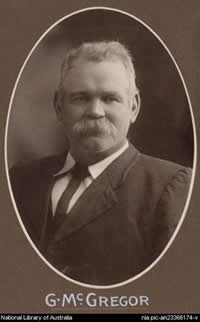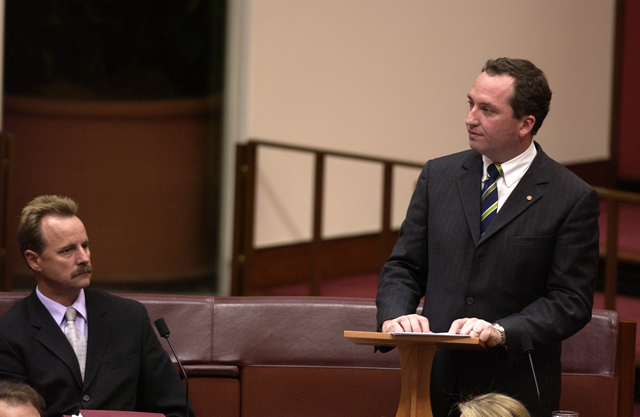187 Speeches not to be read
A senator shall not read a speech.
Amendment history
Adopted: 19 August 1903 as SO 397 but renumbered as SO 392 for the first printed edition
1989 revision: old SO 406 renumbered as SO 187; gender-specific pronoun removed and re-expressed consistently with other standing orders (by use of “shall not” instead of “No Senator shall”)
Commentary
The rationale for this standing order is that “the Senate should have some guarantee that the speech delivered by an honorable senator has been prepared by himself”.[1] It is also claimed that reading speeches destroys the exchange of views which is the hallmark of real debate.[2] When the standing order was briefly debated in 1903, opposition to it was expressed by Senator Stewart (ALP, Qld) on the grounds that it was an unnecessary restriction:
We wish to hear the views of an honorable senator, and if he can give utterance to those views more satisfactorily by having previously committed them to paper, surely it is to the advantage of the Senate, as well as to the advantage of the honorable senator himself, that he should be permitted to do so. I see no reason for this prejudice against written speeches.[3]

Senator Gregor McGregor (ALP, SA) who was blind, argued fiercly to retain the prohibition on reading speeches (Source: National Library of Australia)
Senator McGregor (ALP, SA) (who was blind) suggested that the ability to read speeches was a gift to potential “stone-wallers” who (in the days before time limits on speeches – see SO 189) could “write or type a speech to last for a week”.[4] The standing order was agreed to without a division.
The view that senators should be permitted to read speeches on occasion continued to surface. During 1943, the Standing Orders Committee met to discuss the prohibition on the reading of speeches. President Cunningham, as chair of the committee, made a statement to the Senate conveying the committee’s view that the standing order should remain as it was but “that if a Senator desires for special reasons to read his speech, he should be able to do so by leave of the Senate”. The President indicated that he would rule accordingly.[5]
Presidential rulings from the early years had permitted senators to read extracts from documents and to refer to notes. In 1905, President Baker allowed the Leader of the Government in the Senate, on request, to read a ministerial statement.[6] By the 1940s, there appeared to be tacit acceptance of ministers reading second reading speeches on bills, which had clearly been prepared by officials. Edwards notes in the 1938 MS that copies of these speeches were often circulated in the chamber as the minister was speaking. The Standing Orders Committee examined the practice in 1959 but made no report recommending any change on the matter. Some senators appeared to think that permission for senators to quote from “copious notes” was simply a cover to allow speeches to be read, and that the standing order should be strictly enforced.[7]
The issue continued to be considered from time to time by the Standing Orders Committee. In 1977, the committee decided to defer further consideration pending a debate in the Senate in which the views expressed would provide a basis for such consideration.[8]
An extensive debate on the reading of speeches occurred on 26 August 1982 on a motion requiring the President to enforce the standing order strictly, except for ministers’ second reading speeches, tabling statements and speeches by chairs on behalf of committees. The motion was rejected and along with it an amendment to delete old SO 406. The Standing Orders Committee presented for consideration amendments to recognise certain exceptions sanctioned by practice. “It was put to the Committee that it is not desirable to have an explicit standing order which is not applied on particular occasions unless those occasions are recognised by the Standing Order itself”.[9] No decision was taken and the matter was referred back to the committee for further consideration.[10]

Senator Barnaby Joyce (Nats, Qld) gives his first speech using a lectern (Photo courtesy of AUSPIC)
The committee made a recommendation in 1985 that the Senate adopt explicit exceptions along the lines of the previous proposals (minus the proposal relating to the first speaker on a matter under SO 75 – see note 1017).[11] The report was never considered.
The same issues continue to arise from time to time but there has been no further action to amend or repeal the standing order. Shortly after becoming President in 2002, Senator Calvert authorised the use in the chamber of portable lecterns to be available on request by senators. Lecterns were already a feature of the chamber at the places occupied by the Leader of the Government in the Senate and Leader of the Opposition in the Senate.[12] They are no doubt useful platforms on which to rest “copious notes”.
Some tolerance continues to be given to senators making a first speech, and often in the circumstances mentioned above, but otherwise SO 187 applies as it has always done, often invoked on points of order that are invariably answered by reference to the traditional tolerance of “copious notes”.